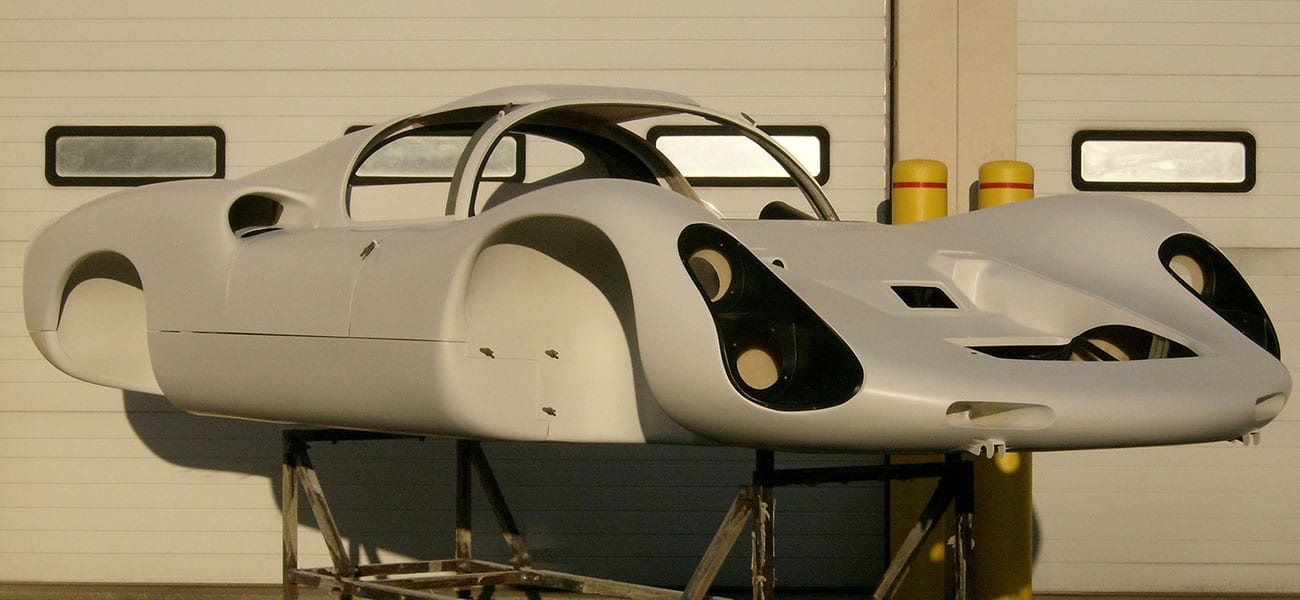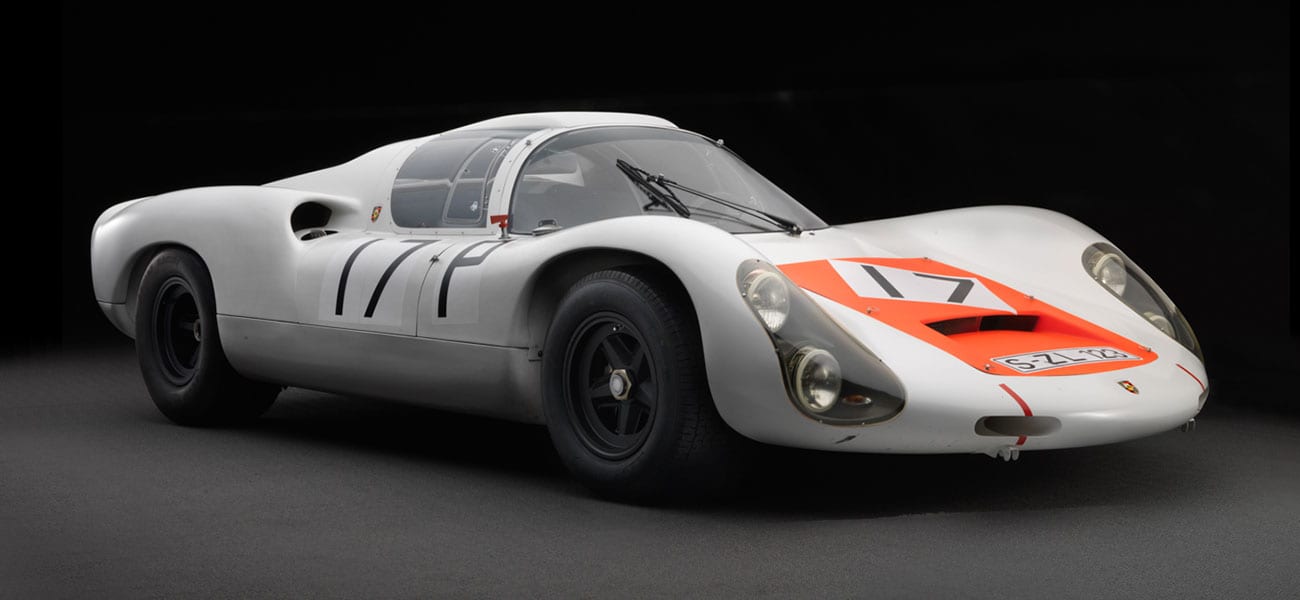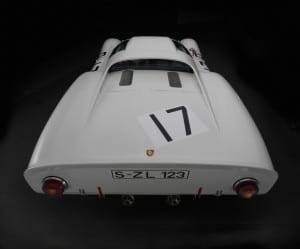Tech Specs
Flat-six air-cooled engine, single overhead camshaft, fuel injected, 1991 cc, 220 hp at 8000 rpm.
Before/After
1967 Porsche


About the 1967 Porsche 910/6
This car won the Nürburgring 1000-kilometer race in 1967. While not the most significant victory in Porsche history, it was perhaps the most sentimental. After a decade of trying, an overall win in Germany’s most prestigious sports car race was finally achieved. The home team won before the home crowd.
Joe Buzetta and Udo Schutz formed the incongruous driver pairing for this car. The American was small, the German huge. Such an ill-conceived couple was chosen to ensure a German driver in each Porsche capable of winning. As the car hurtled into the air over the ‘Ring’s famous jumps, the smaller driver’s feet left the pedals and his body floated off the seat. “It was dangerous as hell” said Joe but such was the price paid for a proper public relations victory. Right behind this Porsche were two more 910/6s.
Yet, despite Porsche’s best racing season in years, the factory lost the prototype championship to Ferrari by a single point. As usual, the under-two-liter trophy was Stuttgart’s, but Porsche wanted more.
In the quest for overall victory, Ferdinand Piëch ruthlessly pared excess weight from his cars. Only in this way could the small-displacement Porsches challenge the bigger cars outright. The quintessential laboratory engineer, Piëch disdained racing – not for the obvious reasons but because of the role uncontrolled variables, including driver talent, could play. Such factors – luck, we would say – often militated that the inferior solutions would win over the superior. To him, the optimal race would test cars on a chassis dyno over a simulated race course.
Yet, since real racing was the game, Piëch played to win… with an unprecedented ferocity, manifested both by the wild proliferation of new racing models produced, and in the competition department’s policy regarding them. So highly stressed were the racing cars due to the search for lightness that only the brand-new ones were used to contest important races. After a single-factory outing, the “used” cars were routinely reconditioned and sold to private teams. Accordingly it was not unusual for Porsche to produce thirty to fifty cars per year in its own race department, which is as close as you can come to the Vince Lombardi query, “If winning isn’t the only thing, why do they keep score?”
Photos – Peter Harholdt














